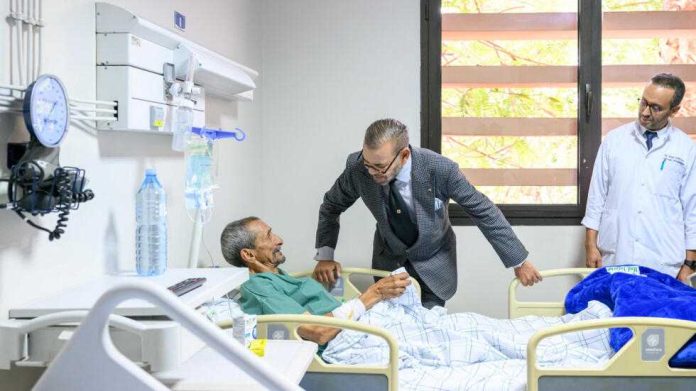After a devastating earthquake hit Morocco’s High Atlas mountains, King Mohammed VI’s low-profile approach has drawn attention, echoing his past leadership style.
Following the catastrophic earthquake in Morocco’s High Atlas mountains on September 8th, residents in the affected areas looked to their leader, King Mohammed VI, for assistance and guidance. However, in line with his historical approach to leadership, the monarch has made only a few public appearances since the tragedy.
Even though the earthquake took a staggering toll of over 2,900 lives, marking it as the deadliest since 1960, King Mohammed has yet to visit the hardest-hit areas. Since taking the throne in 1999, King Mohammed, unlike his predecessor Hassan II, has maintained a discreet presence, usually distancing himself from the public eye and political dilemmas.
Under his rule, Morocco has seen a shift towards economic growth, attracting foreign investment and strengthening its industrial sector. This has cemented the nation’s position as an influential player in the African economic landscape.
However, when it comes to political change, King Mohammed has been conservative. Aboubakr Jamai, a professor at the American College of the Mediterranean in France, noted the king’s absence in crises, stating that without the monarch’s intervention, the government often seems paralyzed.
In contrast, an unnamed government official stated that Morocco possesses the institutional infrastructure and civil organizations necessary to act independently from royal directives. The official emphasized that a swift and coordinated response was launched to tackle the challenges posed by the earthquake.
Back in 2011, when pro-democracy movements led to the overthrow of authoritarian rulers in Tunisia and Egypt, there were demands for change in Morocco as well. In response, King Mohammed made limited constitutional reforms, allowing for some power to be transferred to the elected parliament. However, the monarch retained significant control, including the authority to nominate key ministerial positions.
While the government claims equal political freedom for all Moroccans, analysts and rights groups argue that real power remains consolidated within the royal “Makhzen” or the old political establishment. This has reportedly led to the silencing or exile of many critics.
Moroccan media, known for their restraint when covering sensitive royal decisions, have largely refrained from questioning King Mohammed’s limited visibility since the earthquake. This hesitancy isn’t exclusive to the media; government officials too have maintained a subdued profile.
Highlighting this concern, El Manar Esslimi, a university professor and frequent media commentator, emphasized the need for greater visibility from ministers handling crisis areas like health, housing, and food supplies.
The earthquake also exposed disparities in Morocco’s infrastructural development. While cities like Tangier and Casablanca enjoy high-speed train links, the affected southern region still relies on donkey-led supplies due to its rough terrains.
Amidst the crisis, it’s worth noting King Mohammed’s financial might. Forbes listed him as one of Africa’s wealthiest individuals in 2015, with a personal fortune surpassing $5 billion. Post-earthquake, he directed his royal holding company, Almada, to contribute 1 billion dirhams ($100 million) to a disaster relief fund.
As Morocco grapples with the aftermath of the quake, King Mohammed’s leadership style, characterized by his infrequent public appearances and minimal interactions with the media, remains a topic of discussion and scrutiny.



